Tuscany is full of small villages off the beaten track, enchanted corners and unexplored wonders!
Examples include: the beautiful village of Certaldo Alto a short walk from Poderi Arcangelo, the views from the small town of Barberino Val d’Elsa, the Gerusalemme di Toscana a Montaione, the uninhabited Petrognano Semifonte, the dome of Semifonte etc … and the best known: Monteriggioni, Volterra, San Miniato, San Gimignano, Vinci …
The Jerusalem of San Vivaldo
This particular sanctuary, also known as the Jerusalem of Tuscany, is located a few kilometres from the Poderi Arcangelo Holiday Farm in San Gimignano, in the middle of a vast wooded area where, at the beginning of the fourteenth century, the friar Vivaldo Stricchi da San Gimignano retired to a hermit’s life, choosing as his home the hollow trunk of a chestnut tree.
This particular sanctuary, also known as the Jerusalem of Tuscany, is located a few kilometres from the Poderi Arcangelo Holiday Farm in San Gimignano, in the middle of a vast wooded area where, at the beginning of the fourteenth century, the friar Vivaldo Stricchi da San Gimignano retired to a hermit’s life, choosing as his home the hollow trunk of a chestnut tree.
Today, as then, you can admire the chapels in classical style with their extraordinary terracottas of the Della Robbia school and enjoy a moment of reflection in the tranquillity of this timeless place.
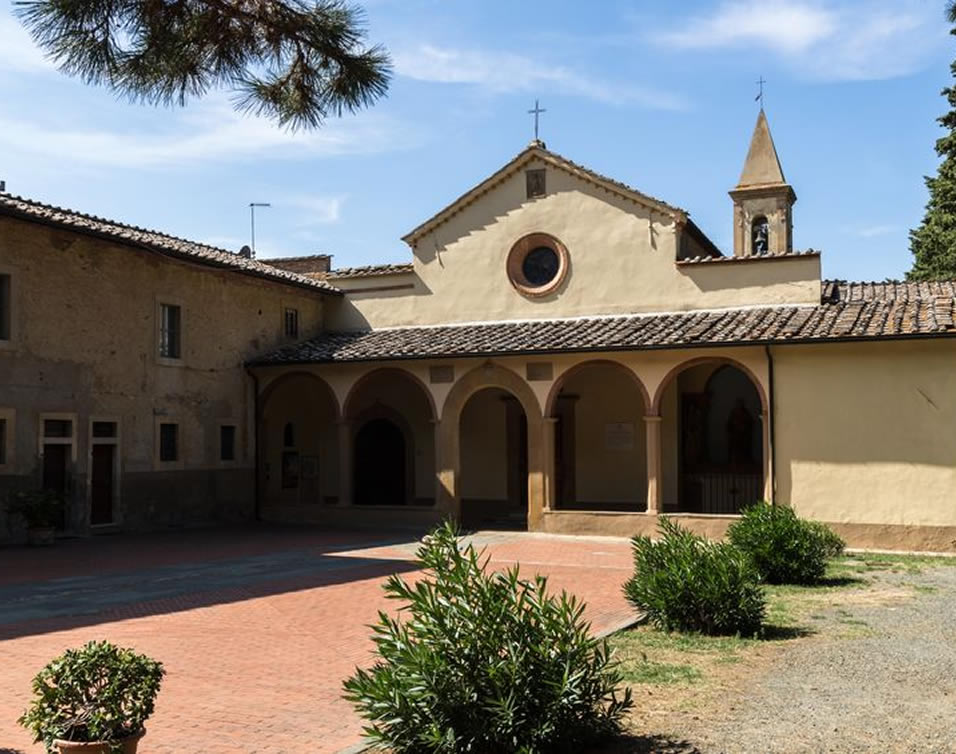
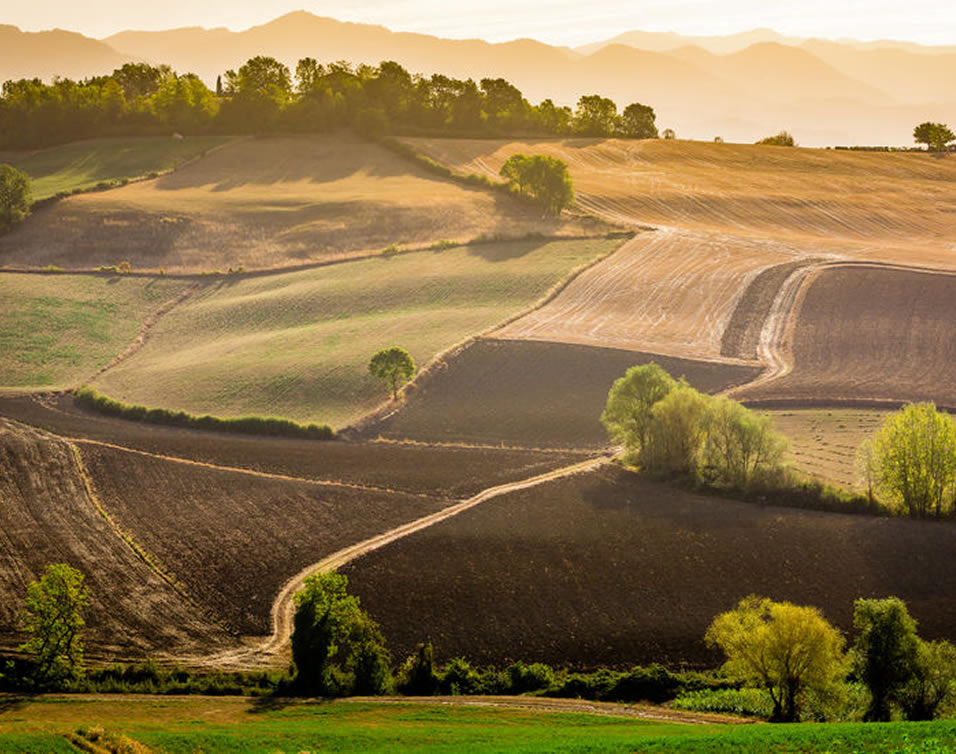
Barberino val d’elsa
The history of Barberino is closely linked to what was once the powerful city of Semifonte, a neighbouring town completely destroyed by the Florentines and the castle of the Counts Alberti.
The history of Semifonte is fascinating: during the Middle Ages it was a large and important city, therefore considered a dangerous enemy of Florence. The struggle for power eventually led the Florentines to take action to eliminate the threat once and for all.
There is no obvious evidence to prove the presence of a castle in Semifonte, but there are many legends about it, which tell us that the Florentines not only forced the citizens of Semifonte to destroy their own city, but that even salt was scattered on the ground.
Those who managed to escape death at Semifonte were sent to Barberino to reinforce both its defensive walls with the stones of the demolished castle of Semifonte and the city, and its population.
Barberino Val d’Elsa grew up as an important market town thanks to its position at the crossroads of roads leading from north to south and from east to west and, for this reason, it often had to defend its borders with the help of Florence.
For this reason Poderi Arcangelo, near Barberino Val d’Elsa, is a fabulous option as a base for your stay in Tuscany and Chianti as it also allows easy access to the most popular destinations in the region.
Entering the village of Barberino from the Porta Senese gate there are several interesting buildings with beautiful wooden doors and clear stone walls that, according to legend, are those from the ruins of Semifonte.
To the left of the entrance is the Palazzo del Cardinale, where the emblem of the Barberini family and that of Pope Urban VIII are displayed. Continuing along the road, however, is Palazzo Pretorio, in front of the small square, with the façade decorated with 35 coats of arms of important noble families who have alternated here since the fifteenth century, including several Florentine families.
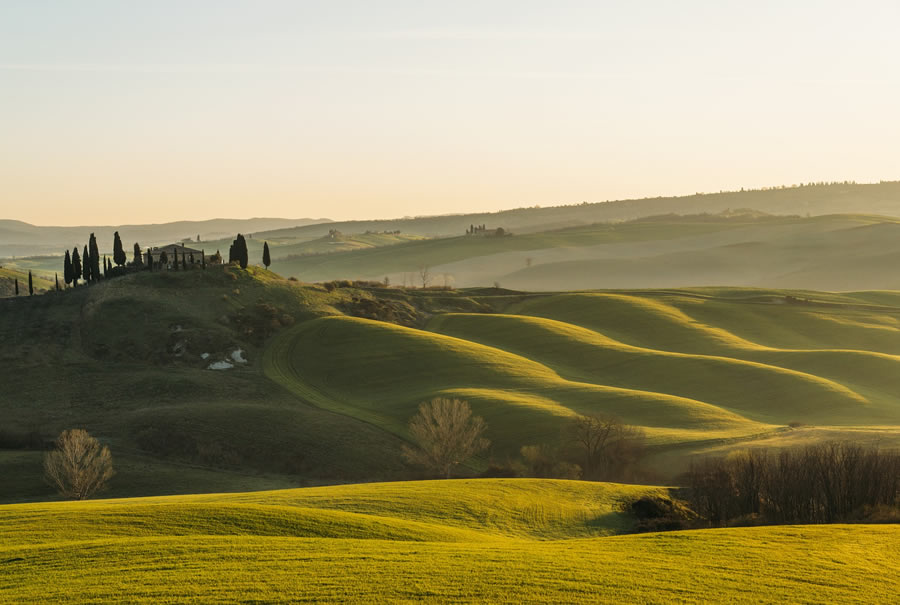
The characteristic urban layout allows you to appreciate the rear of the Church of San Bartolomeo, and a little further on you can also admire the Porta Fiorentina gate which, despite no being longer the original gate is still impressive!
The position of Barberino on the crossroads leading to the Via Francigena has always made this town a place of welcome and rest for travellers and its inhabitants people destined to take care of pilgrims, which is why near the gate is also the Pilgrims’ Hospital, which now houses the modern city library.
Then we reach the Church of San Bartolomeo, rebuilt in 1910 in neo-Gothic style, inside which there is a fragment of a 14th century fresco and a panel representing the Virgin Mary with Child while giving a rosary to Saint Caterina of Siena and Saint Dominico, painted by the Master of Barberino in the 16th century.
The terrace in front of the church is a fascinating place from where you can admire the rolling hills that characterise this area and the harmonious mosaic of olive groves, vineyards and thick woodland.
In the municipality of Barberino Val d’Elsa we can also find the medieval archaeological site of Semifonte, which, thanks to its proximity to the two northern and southern variants of the Volterra road and to the very important Francigena, became very prosperous and powerful.
An inevitable war followed with the definitive defeat and destruction of the city of Semifonte: a long, epic siege, narrated by Messer Pace di Certaldo in his History of the war of Semifonte, in which, in addition to the Florentines, militias from the cities of Poggibonsi, Volterra, Siena and Prato also participated.
Meanwhile Semifonte had instead seen its allies, San Gimignano and Colle di Val d’Elsa, disappear, abandoning it to its fate. This was followed by the already mentioned complete destruction of the city, as well as the absolute ban on building, the only exception being the Chapel of San Michele.
The dome, built between 1594 and 1597, was commissioned by Giovan Battista Capponi for a project by Santi di Tito, in the place where the city and the Castle of Semifonte were destroyed by the army of Florence and built on the basis of an exemption granted by Ferdinando I dei Medici to a law prohibiting any construction on the hill of Semifonte.
The Dome of San Michele Arcangelo with an octagonal base reproduces on a scale of 1:8 the more famous dome of Florence Cathedral, Santa Maria del Fiore. The double-shell construction system is also the same as the dome of Florence, with the only change being the square windows.
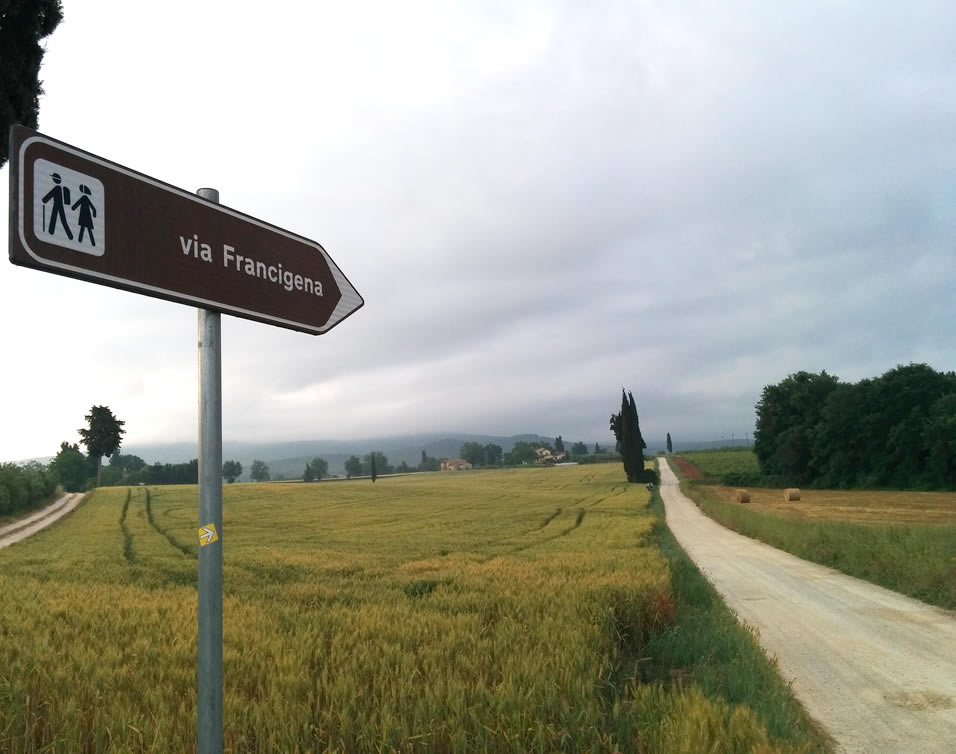
The Via Francigena: to discover Tuscany
Whether it is a spiritual journey or simply for pleasure, following in the footsteps of pilgrims along the ancient Via Francigena is a very special and unique way to discover Tuscany, its landscapes, the people who live there, its culture and its history.
The part of the route that crosses Tuscany is more than 300 km long, which starts from the northernmost point of the region, Pontremoli, and then continues in the direction of Lucca.
Once only travelled on foot or on horseback, today the Via Francigena can also be discovered by bicycle or even by car, since in some areas the roads have been added to the maps.
The historical route crosses hills and valleys, numerous churches and spiritual buildings, the historic centres of villages and towns with a rich historical and artistic heritage such as San Miniato, San Gimignano, Monteriggioni, Siena and Radicofani, surrounded by some of the most beautiful landscapes of Tuscany.
For those who want to discover some of the most interesting but less famous and popular areas for mass tourism, there is the characteristic town of Gambassi Terme just five minutes from Poderi Arcangelo, with its thermal waters, Poggibonsi and the Imperial Fortress, or Bagno Vignoni with its pools dating back to Roman times, located in the historic centre of the country. There are many other places that deserve to be discovered along the Via Francigena which, in reality, has not just one route, but several roads, all going in the same direction.
The peace and quiet of a journey like this will make you appreciate even more the harmony of this timeless landscape, the same which captivated the pilgrims centuries ago. We recommend stopping and visiting the same abbeys and spedali (hospitals) that welcomed the exhausted travellers, and the castles and fortresses that offered them protection during the long walk.
San Galgano and the sword in the rock
San Galgano is located in a beautiful setting in Val di Merse just 35 km south of Siena and can be reached by car, in about 50 minutes from the Poderi Arcangelo Holiday Farm in San Gimignano.
The place includes two points of interest; the great Abbey with a huge church missing its roof and the hermitage of Monte Siepi where, according to legend, Saint Galgano retired to a hermit’s life, there as a symbol of peace he stuck his sword into the rock, where it still remains today.
The Abbey of San Galgano, now without a roof, was built by the Cistercian monks who normally built their monasteries near the river and along important roads, but after the Famine and Plague that hit the community hard, the monks moved to Siena.
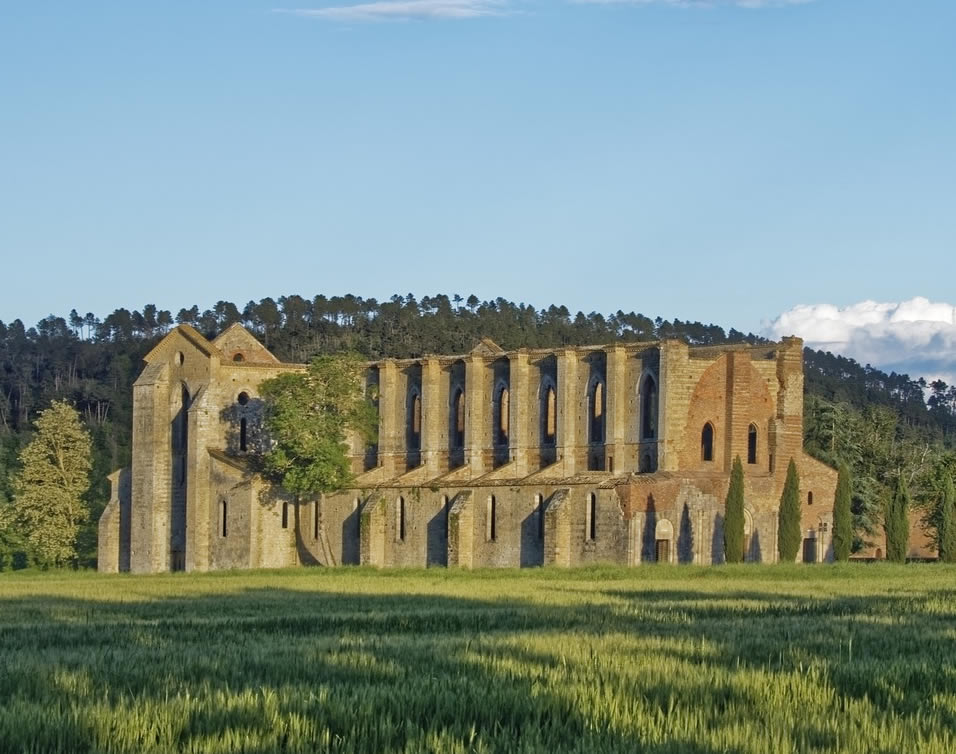
San Galgano is located in a beautiful setting in Val di Merse just 35 km south of Siena and can be reached by car, in about 50 minutes from the Poderi Arcangelo Holiday Farm in San Gimignano.
The place includes two points of interest; the great Abbey with a huge church missing its roof and the hermitage of Monte Siepi where, according to legend, Saint Galgano retired to a hermit’s life, there as a symbol of peace he stuck his sword into the rock, where it still remains today.
The Abbey of San Galgano, now without a roof, was built by the Cistercian monks who normally built their monasteries near the river and along important roads, but after the Famine and Plague that hit the community hard, the monks moved to Siena.
After visiting the Abbey, take the signposted path towards the Hermitage of Monte Siepi. Now on the site there is a chapel that was built after the death of Saint Galgano at the centre of which is the stone where Saint Galgano stuck his sword as a sign of having definitively left behind his life of arms to begin a new life of faith. If the sword actually dates back to the time of Saint Galgano is debatable, but apparently research conducted in 2001, concluded that it is indeed the case.
In the 14th century a rectangular chapel was added, later frescoed by the Sienese painter Ambrogio Lorenzetti. After visiting the chapel, you can enjoy the view in peace before returning to the Poderi Arcangelo Holiday Farm in San Gimignano or visit some of the other villages in the area, for example Monticiano.


